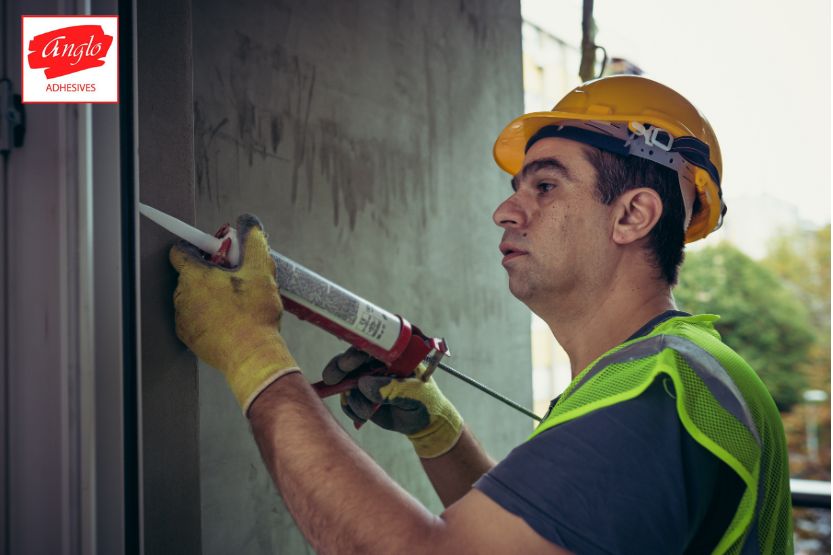Blog
Adhesives in Building Construction: Sticking It Together – The Ultimate Guide

Adhesives are playing an increasing part in the ever-changing construction industry. These adaptable bonding agents, like adhesives in building construction, play an important role in holding a building’s diverse components together, providing structural stability, and ensuring lifespan. This thorough guide delves into the world of adhesives in building construction or the best construction glue, shining light on their different varieties, applications, and the critical role they play in current construction projects. When selecting the best construction glue for a project, several factors should be considered, including the materials being bonded, environmental conditions, and intended application.
Adhesives are chemicals that are used to bind materials together by surface attachment. Adhesives used in construction are an effective alternative to traditional mechanical fastening methods such as screws and nails in building construction. Adhesives used in construction provide a number of benefits, including greater aesthetics, improved weight distribution, and less reliance on obtrusive hardware. Adhesives in building construction help to create cleaner, more seamless architectural designs by removing visible fasteners and discontinuities.
The diverse types of adhesives used in construction offer versatile solutions for bonding, sealing, and assembling a wide range of materials and components. Whether it’s structural bonding, wood joinery, tile installation, joint sealing, flooring attachment, or insulation bonding, there’s an adhesive formulation designed to meet the specific requirements of each application. Adhesives in building construction create strong, durable bonds that distribute loads evenly across bonded surfaces, improving structural integrity and stability.
Types of Adhesives in Construction:
Epoxy Adhesives: Known for their incredible strength and durability, epoxy adhesives are widely used in construction. They provide excellent bonding for materials like metal, concrete, and wood.
Polyurethane Adhesives: Ideal for exterior applications, polyurethane adhesives are resistant to weathering and provide flexibility. They are commonly used in bonding materials with different coefficients of thermal expansion.
Acrylic Adhesives: Acrylic adhesives are valued for their quick curing times and versatility. They are suitable for bonding a variety of materials and are often used in construction projects with time-sensitive deadlines.
Cyanoacrylate Adhesives (Super Glue): These adhesives in building construction bond rapidly and are suitable for bonding small components. While not typically used for large-scale construction, they find applications in niche areas requiring quick, strong bonds.
With such a diverse selection of adhesives used in construction products on the market, it is critical to choose the proper adhesive for each application to ensure optimal performance and lifetime of building structures.
Applications of Adhesives in Building Construction:
Wood Construction: Adhesives in construction play a pivotal role in joining wooden components, providing a seamless and robust connection. This is especially critical in the construction of wooden frames, beams, and furniture.
Concrete Bonding: Epoxy adhesives are frequently employed to bond concrete elements together, reinforcing the structural integrity of the building.
Metal Fabrication: Adhesives offer an alternative to welding or traditional fastening methods in metal construction, providing a clean and aesthetically pleasing finish.
Facade and Cladding Systems: In modern architecture, adhesives are often used to attach cladding materials to the building’s exterior, enhancing both the structural and visual aspects.
Applications of adhesives in construction can be complicated if you don’t choose the best construction glue, leading to weak bonds, wasted materials, and potential delays in the project.
Best Practices and Considerations:
While adhesives provide various advantages, it is critical to consider substrate compatibility, climatic conditions, and load-bearing needs. Following manufacturer instructions and industry standards ensures that adhesives operate optimally in building projects. These versatile adhesives in building construction are used in a variety of applications, from anchoring structural components to adding finishing touches.
As the construction industry evolves, adhesives have emerged as a critical component, revolutionising the way buildings are put together. The complete guide has offered information on the many types, applications, and best practices for adhesives in building construction. Construction professionals may make informed selections to develop structures that last the test of time by studying the strengths and considerations of various adhesives. Best construction glue plays an important part in modern building construction, providing adaptable solutions for bonding, sealing, and assembling various materials and components. Adhesives in building construction are the unsung heroes of the industry, quietly providing structural integrity, efficiency, and aesthetics in the built environment. Whether it’s polyurethane, epoxy, cyanoacrylate, or acrylic adhesive, choosing the best construction glue is crucial for ensuring the success and longevity of a construction project.